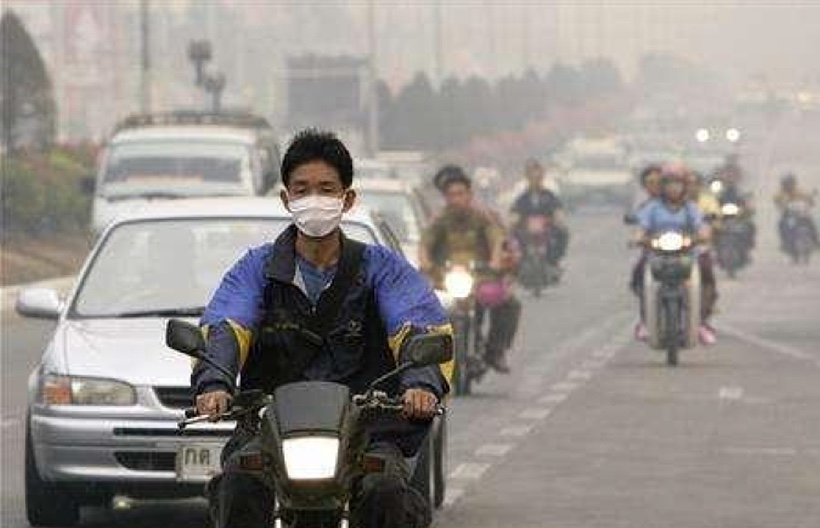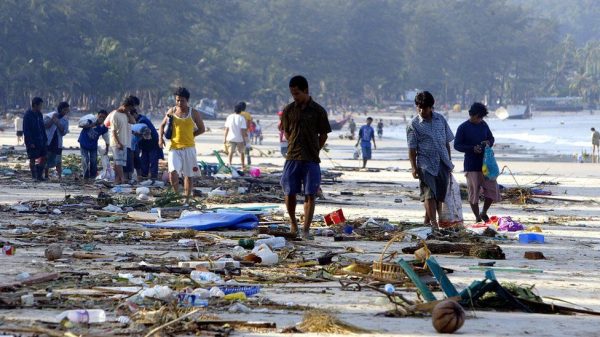“Exposure to PM2.5 pollution was responsible for an estimated 26,000 premature deaths in Thailand in 2019.”
Chiang Mai and northern Thailand is having one of its worst weekends of choking, dangerous air pollution levels. Today the levels have reached ‘hazardous’ levels in some areas in northern Thailand, according to iqair.com
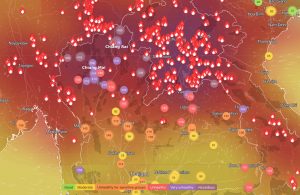
The dangerous levels of smoke-induced air pollution are mostly being caused from across the borders of Thailand although Thai officials claim they’re doing their best to limit the amount of agricultural waste burning within Thai borders.
Both the northern city areas of Chiang Mai and Chiang Rai are suffering ‘very unhealthy’ and ‘hazardous’ levels of smog this weekend. Chiang Mai, for the third time this week, has been awarded the ‘Worst Air Quality Index Ranking’ in the world.
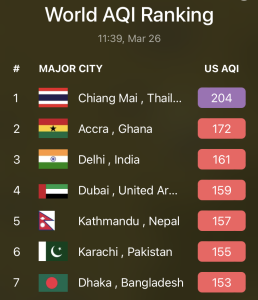
The northern, and to a lesser extent the north eastern, sections of Thailand are being unfairly afflicted with the annual burning off season – a combination of poor farming practices, a lack of agricultural infrastructure, lack of official enforcement and zero co-operation between the governments of Thailand, Laos, Cambodia and Myanmar.
With the northerly, and north easterly monsoon at this time of the year, Bangkok also ends up blanketed by choking haze on the worst days. The further south you travel in Thailand, the less the effect from these northern fires.
The NASA live satellite website shows the current situation in the region (taken at noon on Sunday Thai time), indicating the critical problem of fires in the area – almost all human lit and a result of the pressure on farmers by multinational companies to mitigate costs.
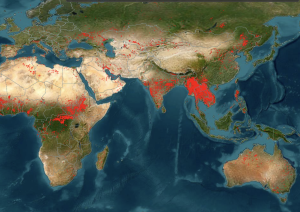
SCREENSHOT: South East Asia, compared to the rest of the world, is lit up like a Christmas tree, indicating the live fires currently burning in the region
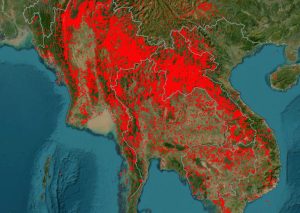
SCREENSHOT: Zooming into northern Thailand, indicating the high number of fires burning in northern Laos and north western Myanmar
Whilst the annual issue is abundantly clear and well published these days, the Thai government has been unable to tackle the core issues of the problem – the burning off in areas outside the Thai borders. Whilst they have been able to partially limit the burning of plantations inside Thailand, the ‘burning issue’ beyond the Thai borders appears unsolvable at this time.
PM2.5 is used to measure atmospheric particulate matter (PM) that has a diameter of less than 2.5 micrometers, which is about 3% the diameter of a human hair. The danger of PM2.5 pollution in the north of Thailand is significant due to the adverse health effects it can have on people, particularly those with pre-existing respiratory and cardiovascular conditions.
PM2.5 can penetrate deep into the lungs and even enter the bloodstream, leading to a wide range of health problems such as asthma, bronchitis, heart disease, stroke, and lung cancer. Exposure to high levels of PM2.5 pollution over extended periods can cause irreversible damage to the lungs and lead to premature death.
In the north of Thailand, particularly during the dry season, PM2.5 levels often exceed safe levels set by the World Health Organization (WHO). Factors contributing to this problem include forest fires, agricultural burning, and industrial emissions.
The potential for deaths from PM2.5 pollution in the north of Thailand is significant, particularly among vulnerable populations such as the elderly, children, and people with pre-existing health conditions. According to a study conducted by the Health Effects Institute, exposure to PM2.5 pollution was responsible for an estimated 26,000 premature deaths in Thailand in 2019.

